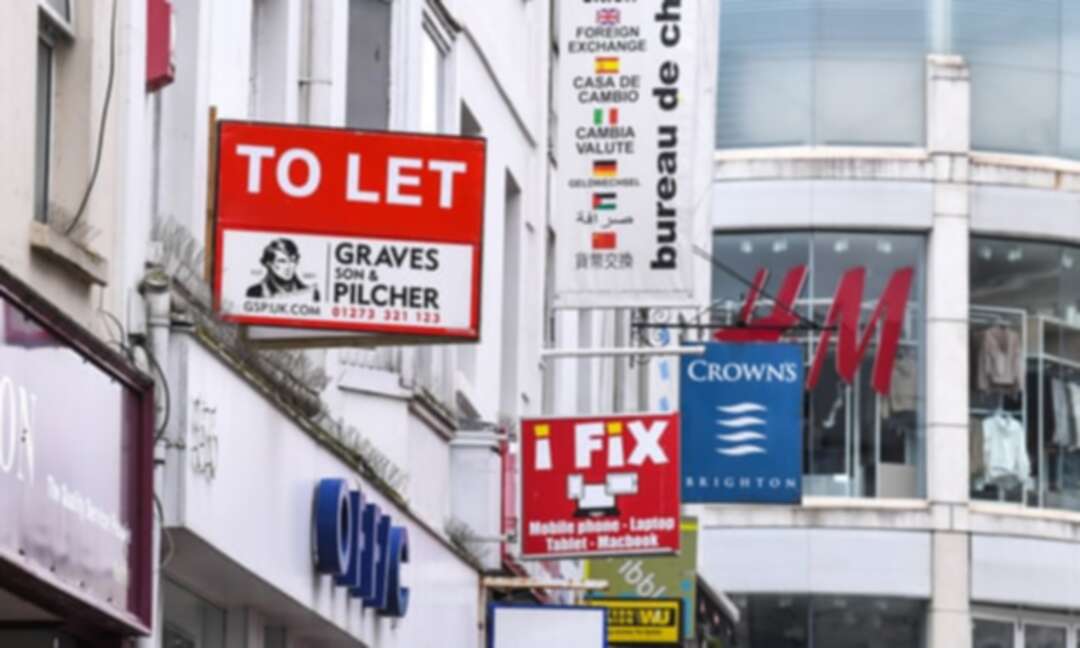-
British high street lost 11,000 shops in 2020, study shows

A further 18,000 may close in 2021 as researchers fears full impact of Covid crisis has yet to come
More than 11,000 outlets permanently disappeared from high streets, shopping centres and retail parks in Great Britain last year, with independent retailers and villages faring far better than chain stores and city centres.
A net total of 9,877 chain outlets and 1,442 independent retail, restaurant and leisure premises closed their doors in England, Wales and Scotland in 2020, according to the Local Data Company (LDC). The analysis covered 680,000 outlets in 3,000 shopping locations.
Government support, including business rates relief, a moratorium on evictions for those unable to pay landlords, support grants and furlough pay for workers, helped slow the pace of closures for independents by 11% compared with 2019.
That help ensured that the pace of closures was not as bad as predicted by LDC, which had expected at least 14,900 outlets to be vacated. However, the true impact of the pandemic has yet to become apparent. Many outlets included in the research were temporarily closed during lockdowns and were not counted as shut but may never reopen after restrictions are relaxed next month.
Up to 18,000 more shops, restaurants and leisure outlets could be vacated as the collapse of major retail groups including Debenhams, Topshop and Dorothy Perkins hits home, according to LDC.Lucy Stainton, head of retail at LDC, said: “Our latest report shows a marked increase in the structural decline across the physical retail and leisure markets but we would also argue that we aren’t yet close to seeing the full impact of the Covid-19 pandemic.
“What remains to be seen are the consequences of government support ending, effectively ‘defrosting’ a significant portion of the market which has been frozen in time since the onset of the pandemic. With this in mind we would expect to see the state of play in terms of vacancy rates and net change worsening over the course of 2021 and 2022 before levelling out.”
In 2020, fashion and clothing stores led the decline followed by bookmakers, estate agents and mobile phone shops. Barbers were the fastest-growing high street businesses, despite months of lockdowns which have kept them out of action, followed by beauty salons, fast food outlets and nail bars. Supermarkets and grocers were also among those faring well as they benefited from “essential” status during the lockdowns and allowed to trade.
The loss of commuters and tourists hit city centres hard, with unit vacancies rising by 2.5 percentage points to 16.1%, higher than any other type of location. In contrast, villages, which are surrounded by residential areas with a higher balance of independent retailers, were more resilient with vacancies increasing by just0.4 points to 11.1%.
More local convenience stores opened than closed for the first time in four years as the shift to working from home and a desire to avoid public transport benefited more convenient neighbourhood outlets.
The data also reveals the difficulties ahead in reinventing town centres to be less reliant on retail. Of the House of Fraser, Debenhams or Beales department stores that closed between January 2017 and December 2019, less than a quarter have found new occupiers without having to be reorganised into smaller units.
About 30% of the former department stores were either demolished or split into smaller units. LDC said a similar fate was likely to await a further 124 Debenhams stores which closed at the end of last year, but are not included in the 2020 data as many are expected to briefly reopen to clear stock this year before shutting permanently.
source: Sarah Butler
Levant
You May Also Like
Popular Posts
Caricature
BENEFIT Sponsors BuildHer...
- April 23, 2025
BENEFIT, the Kingdom’s innovator and leading company in Fintech and electronic financial transactions service, has sponsored the BuildHer CityHack 2025 Hackathon, a two-day event spearheaded by the College of Engineering and Technology at the Royal University for Women (RUW).
Aimed at secondary school students, the event brought together a distinguished group of academic professionals and technology experts to mentor and inspire young participants.
More than 100 high school students from across the Kingdom of Bahrain took part in the hackathon, which featured an intensive programme of training workshops and hands-on sessions. These activities were tailored to enhance participants’ critical thinking, collaborative problem-solving, and team-building capabilities, while also encouraging the development of practical and sustainable solutions to contemporary challenges using modern technological tools.
BENEFIT’s Chief Executive Mr. Abdulwahed AlJanahi, commented: “Our support for this educational hackathon reflects our long-term strategic vision to nurture the talents of emerging national youth and empower the next generation of accomplished female leaders in technology. By fostering creativity and innovation, we aim to contribute meaningfully to Bahrain’s comprehensive development goals and align with the aspirations outlined in the Kingdom’s Vision 2030—an ambition in which BENEFIT plays a central role.”
Professor Riyadh Yousif Hamzah, President of the Royal University for Women, commented: “This initiative reflects our commitment to advancing women in STEM fields. We're cultivating a generation of creative, solution-driven female leaders who will drive national development. Our partnership with BENEFIT exemplifies the powerful synergy between academia and private sector in supporting educational innovation.”
Hanan Abdulla Hasan, Senior Manager, PR & Communication at BENEFIT, said: “We are honoured to collaborate with RUW in supporting this remarkable technology-focused event. It highlights our commitment to social responsibility, and our ongoing efforts to enhance the digital and innovation capabilities of young Bahraini women and foster their ability to harness technological tools in the service of a smarter, more sustainable future.”
For his part, Dr. Humam ElAgha, Acting Dean of the College of Engineering and Technology at the University, said: “BuildHer CityHack 2025 embodies our hands-on approach to education. By tackling real-world problems through creative thinking and sustainable solutions, we're preparing women to thrive in the knowledge economy – a cornerstone of the University's vision.”
opinion
Report
ads
Newsletter
Subscribe to our mailing list to get the new updates!






















